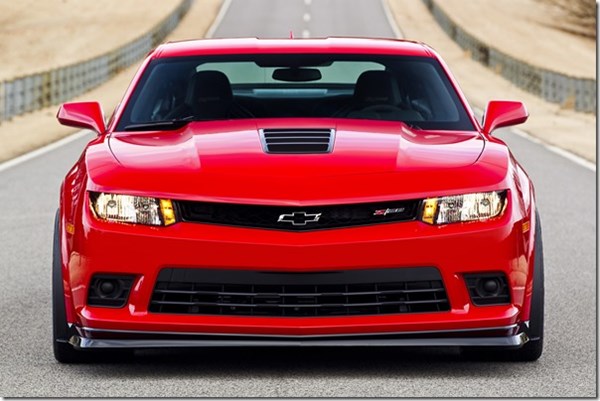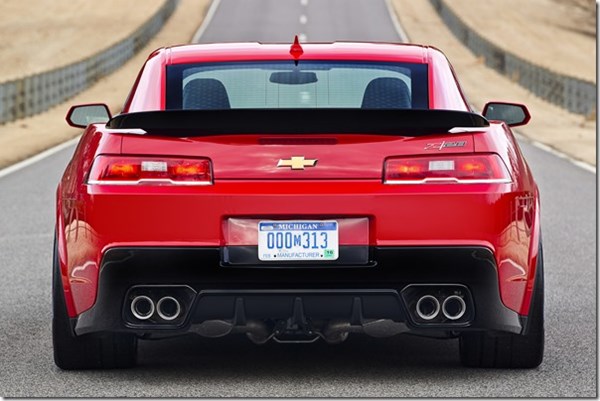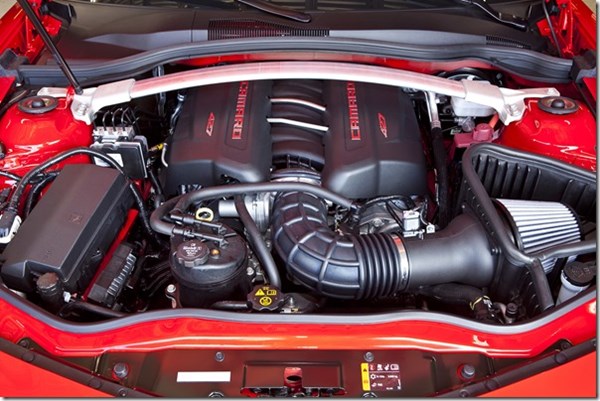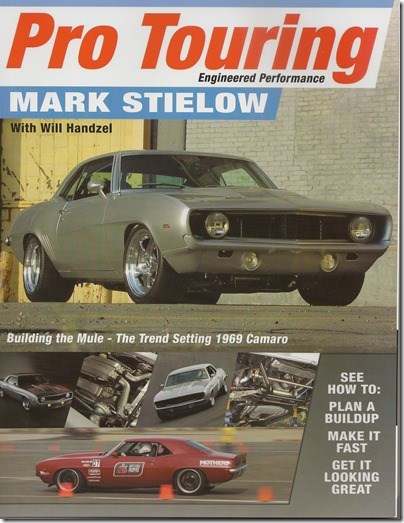How the 2015 Camaro Z/28 Was Developed
The 2015 Camaro Z/28 has a 7.0-liter LS7 engine rated at an SAE-certified 505 hp and 481 lb-ft of torque.
#aluminum #hybrid #interior
The 2015 Camaro Z/28 has a 7.0-liter LS7 engine rated at an SAE-certified 505 hp and 481 lb-ft of torque. The engine, familiar to those who are familiar with Corvettes, features a forged-steel crankshaft, titanium connecting rods, high-flow cylinder heads with titanium intake valves.
It is mated to a TREMEC TR6060 six-speed manual transmission that is accessed via a 5.1-ratio short-throw shifter.

And because when you go really, really fast (e.g., the Z/28 ran a 7:37.47 lap on the Nürburgring road course), you’ve also got to slow down and even stop (sometimes) with considerable alacrity, so the car is fitted with Brembo carbon ceramic brakes capable of 1.5 g in deceleration.

What’s more, the Z/28 is comparatively light. Want to adjust the front seats? You do it manually because the motors are mass. The rear seat pass through? Gone. And the rear seat is redesigned with weight-saving high-density foam. The engine sounds are readily heard in the cabin, because sound-deadening was eliminated, as was the carpet in the trunk. What’s more, while companies often boast about their audio speakers, that’s not the case for the Z/28 because there is a single speaker, and that’s there only because the clicking sound for the turn indicators, a required sound, comes through the speakers. The battery is lighter and the rear window glass is thinner (by 0.2 mm), but every little bit helps. HID headlamps and fog lights are nice—but heavy. Gone. Summer in many parts of the country are hot. Drive the Z/28 as it is intended to be, and prepare to be hot, because there is no standard air conditioning. That is the option (along with a few more speakers).

The result of all of this elimination is a 7.6:1 power-to-weight ratio. Get the picture as to how this vehicle is meant to be driven on a track—hard?
Mark Stielow, Program Engineer Manager for the Chevrolet Camaro Z/28. He also worked on the Camaro ZL1. He pretty much lives, breathes and, of course, drives Camaro. (Yes, he lives in Michigan. Yes, he had a Z/28 as his daily driver this past brutal winter. How? He put Blizzaks on in place of the Pirelli PZero Trofeo R motorsport-compound tires.)

Stielow talks about the Z/28 and how it was developed with John McElroy of Autoline, Michelle Krebs of AutoTrader and me on this edition of “Autoline After Hours.”
In addition to which, McElroy, Krebs and I talk about the new BMW M cars, the potential shift to aluminum for the auto industry, flying cars (really) and more.
Check it all out here:
RELATED CONTENT
-
Honda Re-Imagines and Re-Engineers the Ridgeline
When Honda announced the first-generation Ridgeline in 2005, it opened the press release describing the vehicle: “The Honda Ridgeline re-defines what a truck can be with its true half-ton bed payload capability, an interior similar to a full-size truck and the exterior length of a compact truck.” And all that said, people simply couldn’t get over the way there is a diagonal piece, a sail-shaped buttress, between the cab and the box.
-
Mercedes-Benz Sprinter 2500 Passenger Van
It is hard to describe how large—more precisely, long and spacious—the Sprinter Passenger Van is in a meaningful way.
-
Jeeps Modified for Moab
On Easter morning in Moab, Utah, when the population of that exceedingly-hard-to-get-to town in one of the most beautiful settings on Earth has more than doubled, some people won’t be hunting for Easter eggs, but will be trying to get a good look at one of the vehicles six that Jeep has prepared for real-life, fast-feedback from the assembled at the annual Easter Jeep Safari.


.jpg;width=70;height=70;mode=crop)






